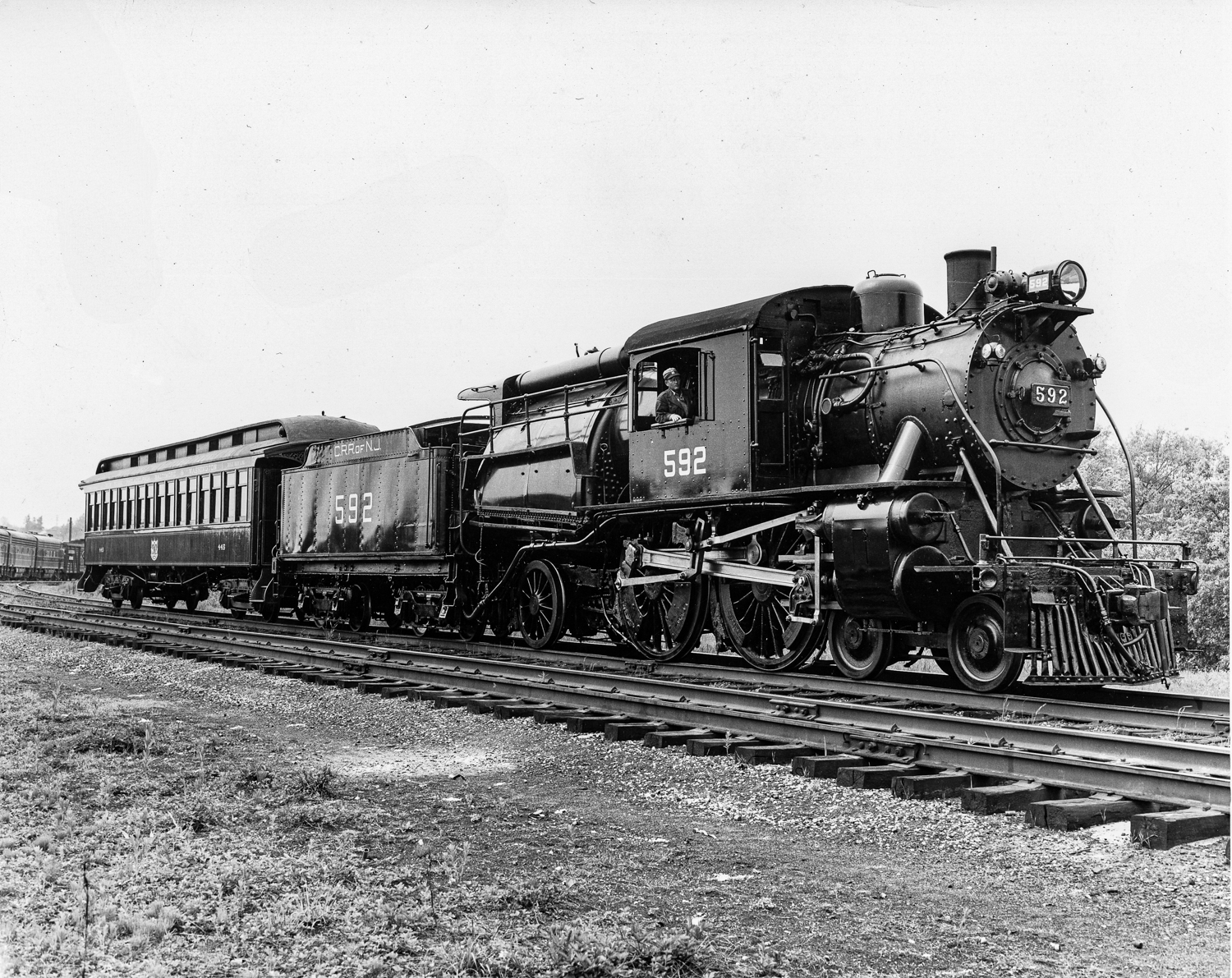Quick Facts
| Name | Atlantic Camelback |
|---|---|
| Manufacture Date | 1901 |
| Railroad Of Record | Central Railroad of New Jersey |
| Manufacturer | American Locomotive Company (ALCO) |
| Rolling Stock Type | Steam Locomotive |
Description
Manufactured in 1901 by the American Locomotive Company (ALCO), the Central Railroad of New Jersey (CNJ) No. 592 is the world’s only surviving “Atlantic Camelback” steam locomotive. Not to be confused with “Camels,” Camelback locomotives feature long cabs that from run from the back of the smokebox to the front of the firebox. The “Atlantic” name refers to a 4-4-2 wheel arrangement (just as 4-6-2s were called “Pacific Camelbacks”). Thanks to their massive driving wheels, these “high-wheeler” locomotives were exceptionally fast, capable of flying down the railroad at over 90 miles per hour. According to unofficial CNJ records, one engineer pushed a standard Camelback to speeds of 120-127 miles per hours while crossing the “racetrack” – a straight stretch of track between Winslow Junction and Atlantic City – in 1905. Thanks to a built-in water scoop, all Atlantic Camelbacks were able to take on water without slowing down or stopping at a water station. It is no wonder, then, that the Atlantic Camelback design was considered the “secret weapon” of the Reading Railroad and CNJ.
Despite the advantages of the Atlantic Camelback, the hump-backed “Mother Hubbard” design was eventually outlawed by the Interstate Commerce Commission. The locomotive was simply too dangerous and impractical for crewmen. To make room for the engine’s extra-large anthracite-burning “Wootten” firebox, the cab had to be placed above the boiler shell. As a result, engineers were greatly at risk of heatstroke. Making matters worse, the driving rods were located directly beneath the cab, meaning that the engineer could be mortally wounded in the event of a malfunction. On more than one occasion, a Camelback engineer perished in the cab while the oblivious fireman continued to stoke the fire. Conditions were not much better for the fireman, who was entirely unprotected from harsh weather conditions. Camelback production ended in 1918, and the engines were soon replaced with newer “Pacific” type locomotives. Some Atlantic Camelbacks continued to service CNJ commuter lines until the mid-1950s.
The CNJ No. 592 spent the majority of its life servicing an express route between Philadelphia and Atlantic City. On several occasions, the Camelback also serviced the Royal Blue, an elite B&O passenger line between Philadelphia and New York City. Because of its impressive speed, the No. 592 was sometimes used in emergency situations. In 1926, the locomotive was chartered to rush film of the Dempsey-Tunney fight from Philadelphia to New York City in time for the morning paper. Later that year, the Atlantic Camelback carried famed singer Enrico Caruso to New York City, where he had an opera engagement. According to rumor, the locomotive achieved speeds of over 100 miles per hour during these emergency trips.
In the 1930s and 1940s, the No. 592 was occasionally used on the CNJ’s premier Blue Comet Line, a passenger route that was typically serviced by larger “Pacific” type locomotives. When railroad passenger services began to decline after World War II, the No. 592 was reassigned to local commuter lines. The Atlantic Camelback made its last revenue-earning run in 1940 and, in 1954, it was donated to the B&O Railroad Museum alongside the CNJ No. 1000 diesel-electric switcher. Witnesses recall that the arrival of the locomotives was met with much fanfare from the people of Baltimore.
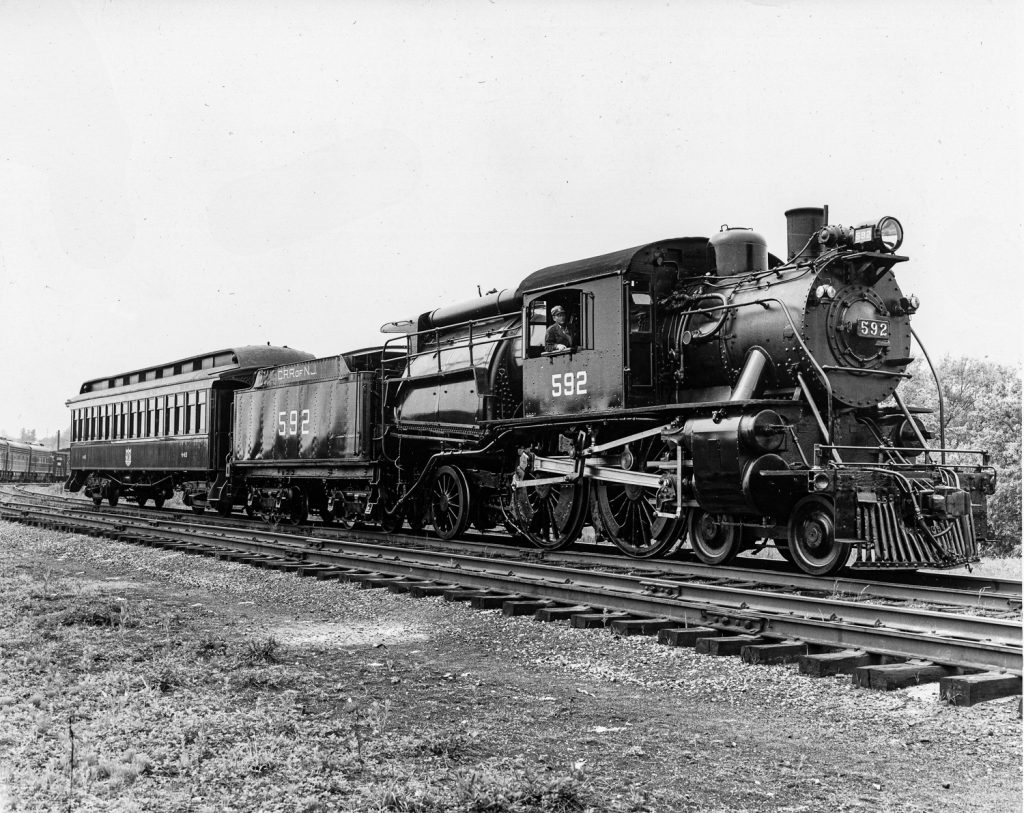
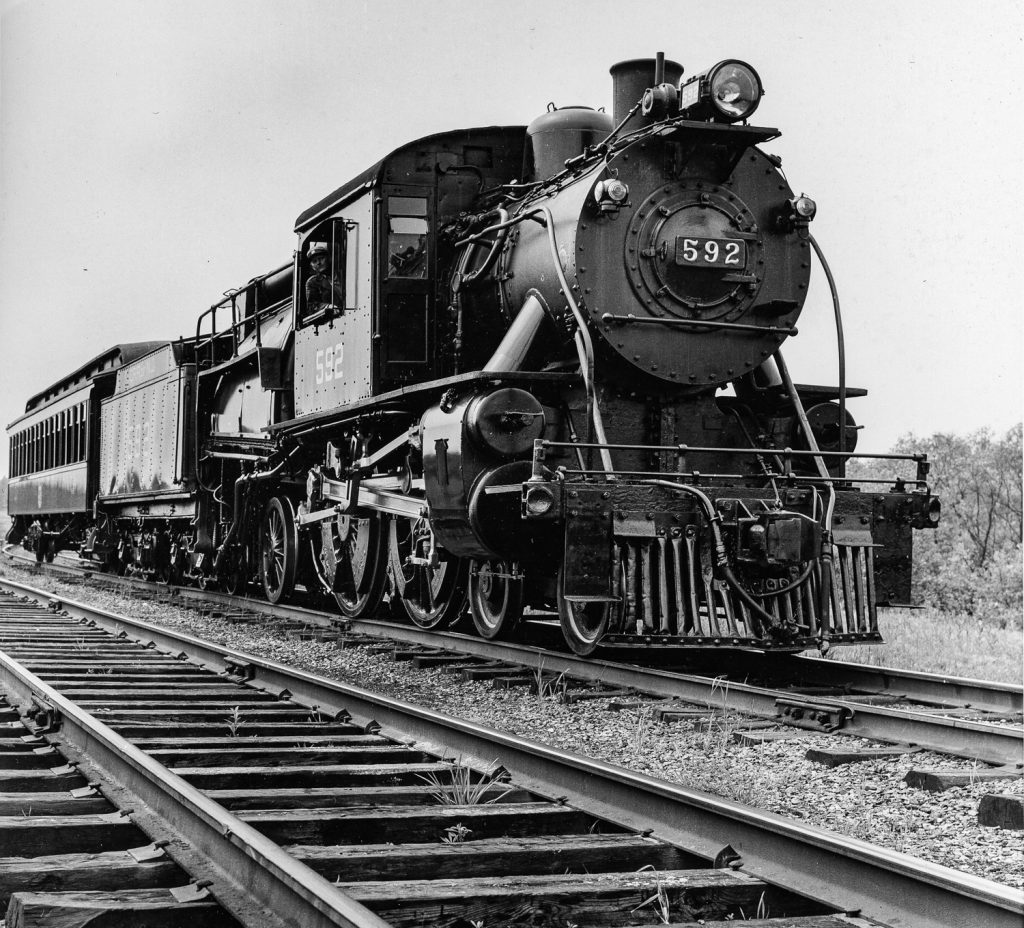
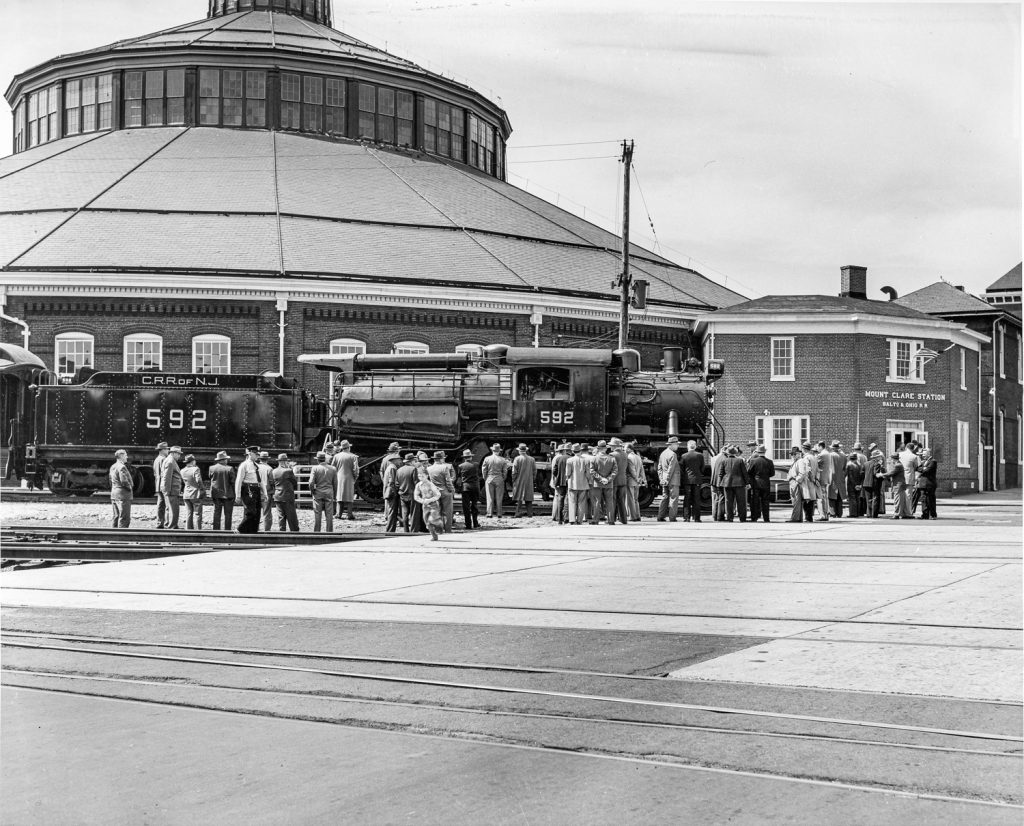
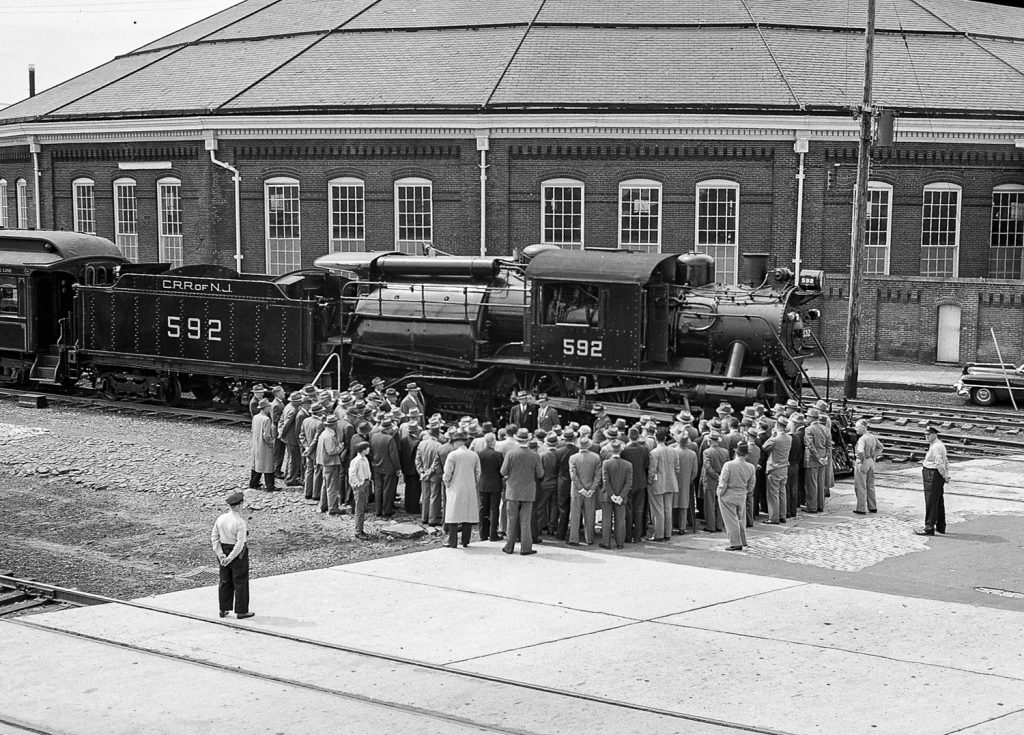
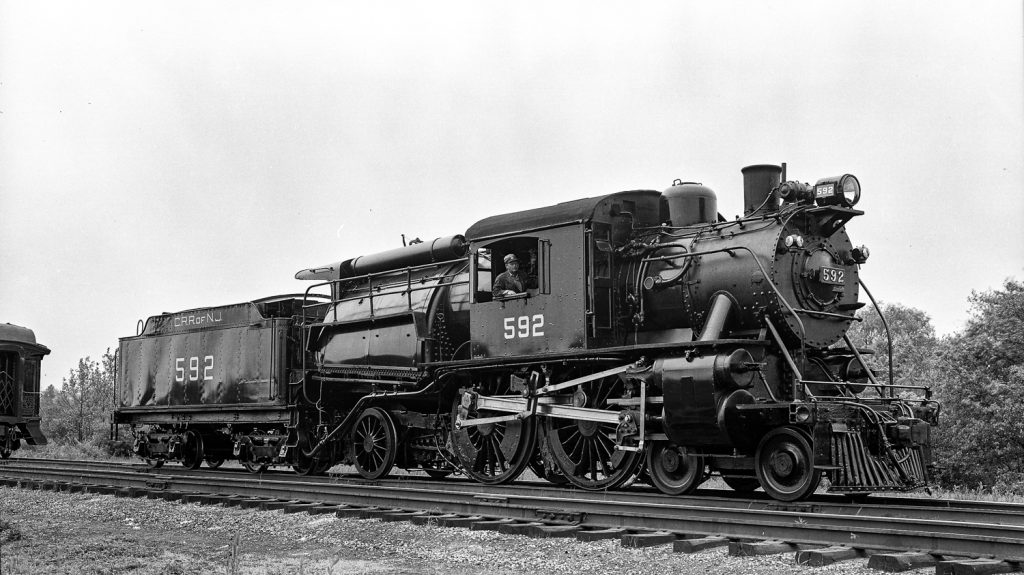
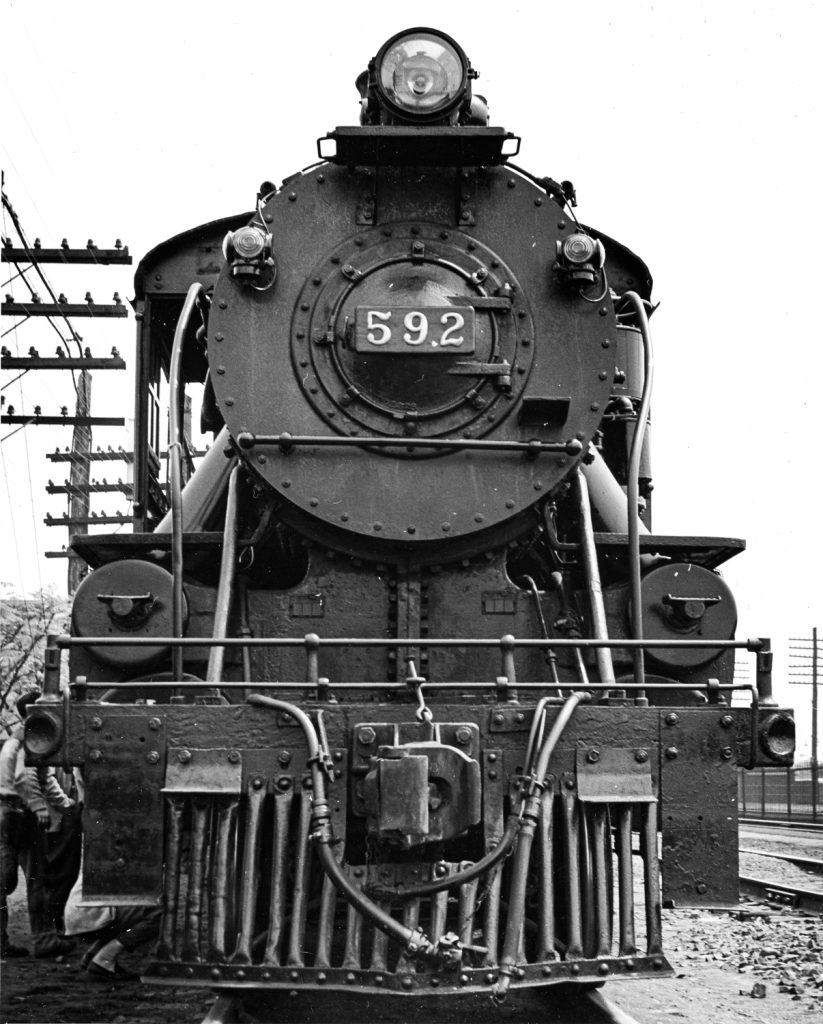
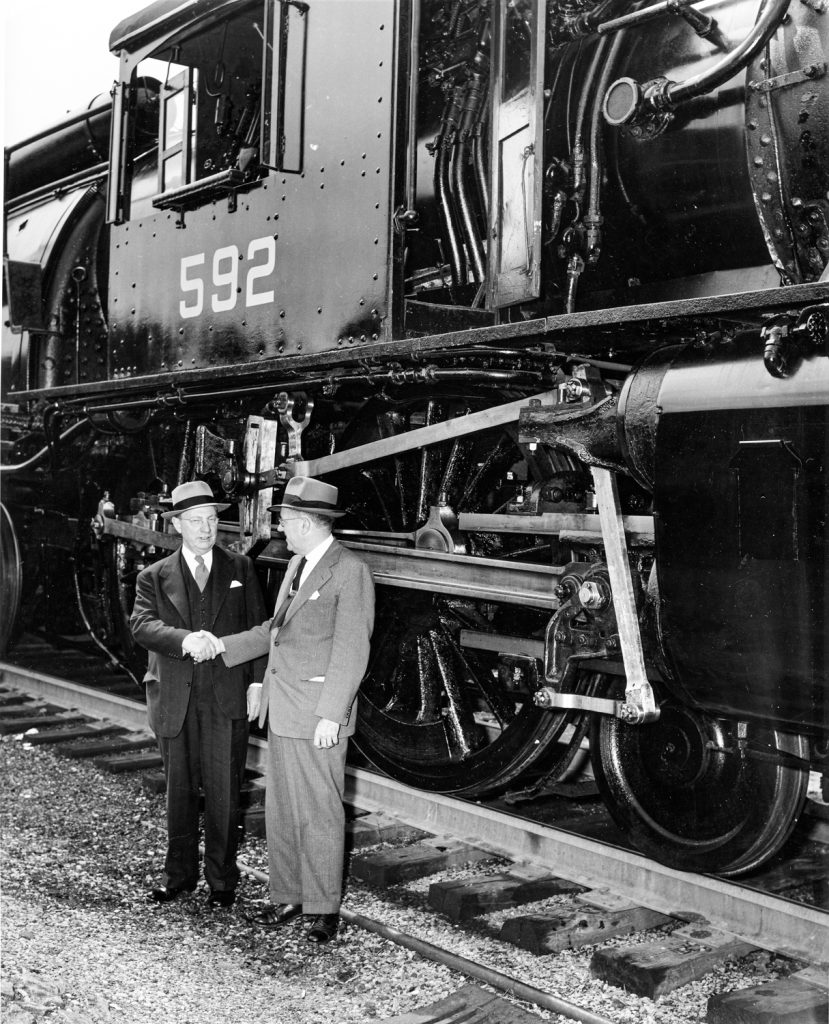
Can't Get Enough?
There’s even more to explore. Check out this and other unique pieces from our collection.
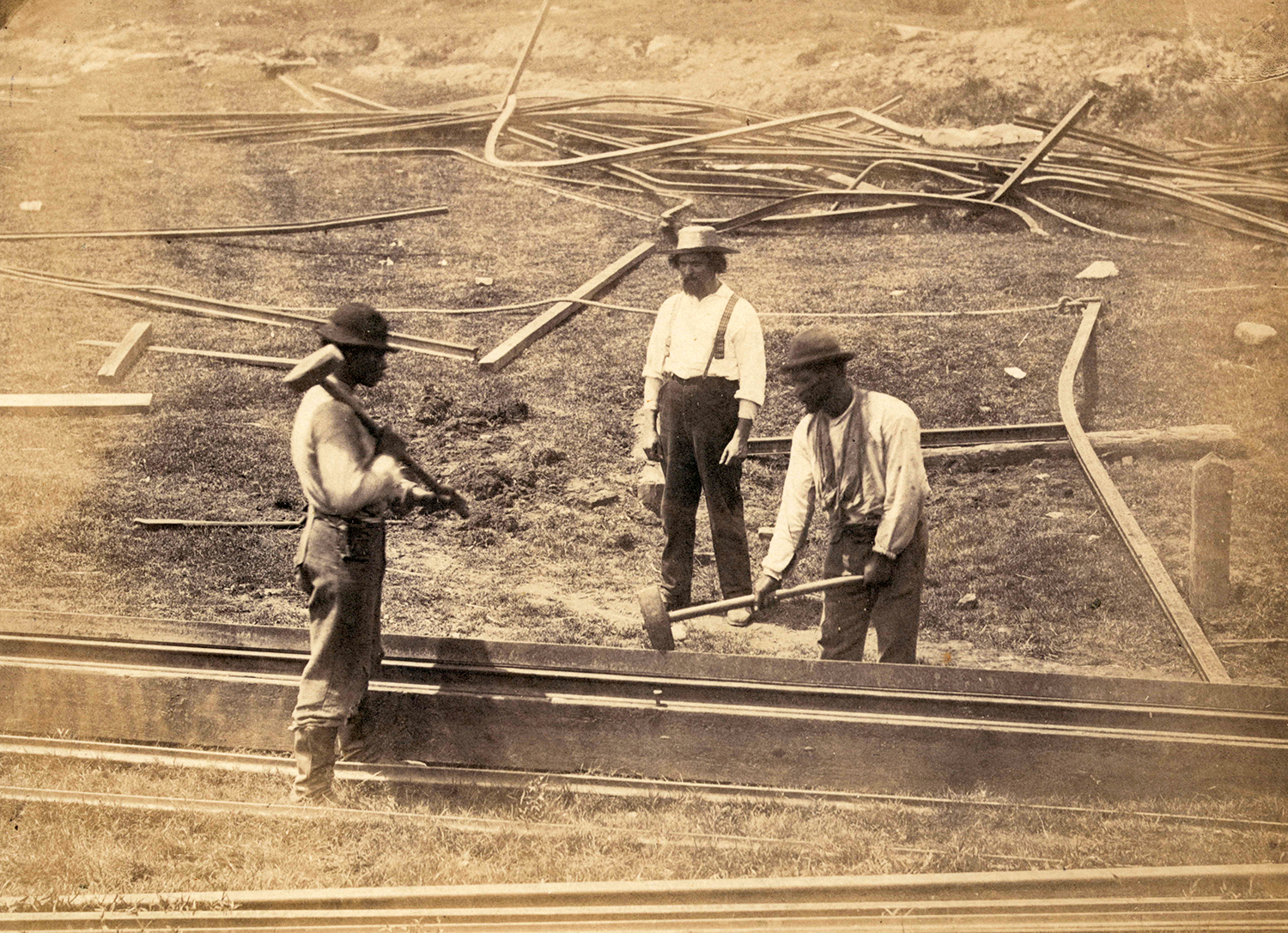
Did You Know?
The United States Military Railroad was the first US government agency to hire African Americans.

